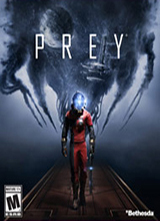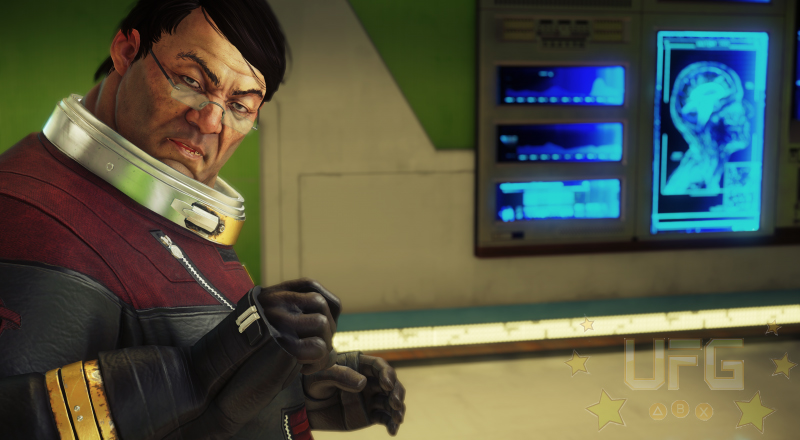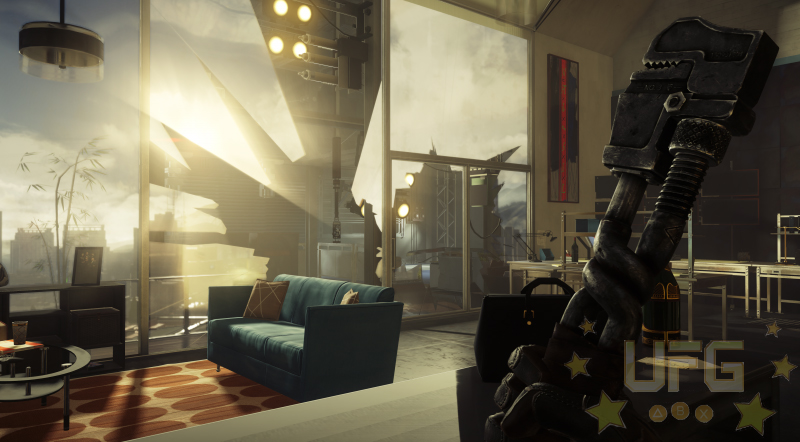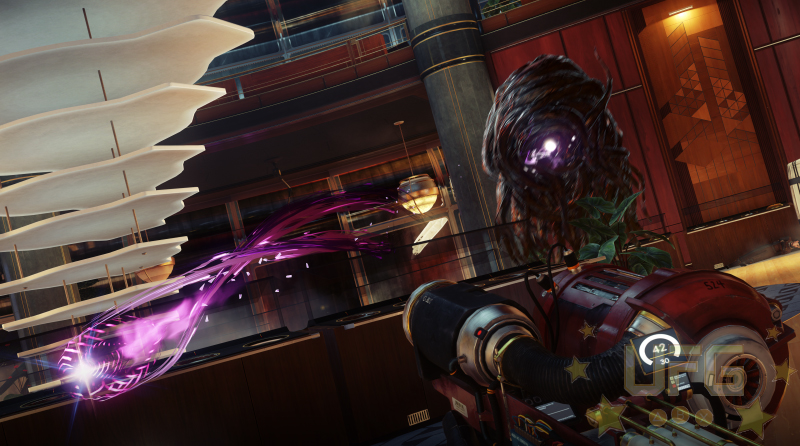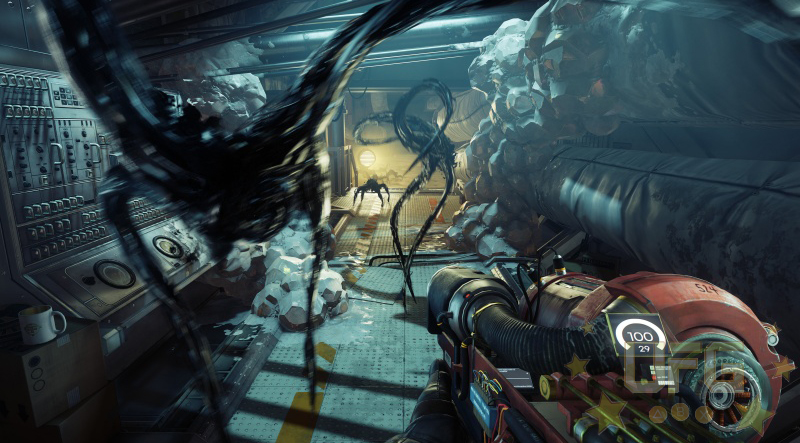Prey (2017)
When I first heard that Prey was being developed by Arkane Studios, I was both excited and afraid. I was excited because Arkane is a great developer who isn’t afraid to try new things. I was afraid because this new Prey seemed nothing like its predecessor; I didn’t want them to use a popular property to prop up a new franchise. After spending a significate time in the final product, I’m afraid to say that my fears were warranted…
Prey takes place in an alternate future timeline – one where the failed assassination attempt of JFK sparked an accelerated Space Race. Our extended presence in space led to some interesting events in history, a major development being an encounter with hostile aliens called the Typhon. Exhibiting special abilities (like mind control), the aliens are contained rather than destroyed. Fast forward to the year 2025 and a company called TranStar builds the Talos 1 research/space station. Its sole purpose: to develop advances in neuroscience so humans can utilize the Typhon’s abilities.
This is where our protagonist Morgan Yu comes in. As a part of the research team on Talos, he was tasked with undergoing tests that would alter his brain*. He would take what’s called Neuromods to gain specific skills from the different types of Typhon. After a short period of time, the neuromods would be removed (I assume for further testing) resulting in Morgan losing some of his memory. This is one of the reasons that, when the Typhon inevitably escape their cages to wreak havoc across the station, Morgan has no idea what’s going on.
Prey starts out promising but fizzles once things get going. Outside of the very beginning and the very end, the story is conveyed through scattered emails and audio files, most of which dealing with past happenings aboard the station. Similar games normally use these mechanics to deliver secondary information that enhances the main conflict. The newspaper clippings about missing persons in Resident Evil 7 help to establish its dark atmosphere; these maniacs have been abducting people for some time now. They aren’t to be trifled with. Arkane used this method for delivering more than just the lore and backstory, instead used for Prey’s main plot.
As expected, the results vary. The side quests were really interesting in that they revealed information about the Talos 1 crew. Some people died heroically, others weren’t so lucky, and some were into some crazy stuff. Figuring out what happened was fun and normally led to new weapons or useful materials (more on that later). The things is, because of the nature of side quests, I was ok with missing a few during my playthrough. They’re optional. The game’s plot isn’t optional…or at least, it shouldn’t be treated as so. Regulating key moments through emails that can be missed isn’t smart. Not only that, it can be boring to have sit and read through them. A lot of the things that would invoke a sense of urgency, like the impending slaughter of former colleagues or the threat of the Typhon reaching Earth, were undone by the way the critical information was delivered.
To be fair, there’s no way to miss certain plot points. Players will ultimately walk away knowing what went down. It’s just that there is a lot riding on what the player knows, from moment to moment gameplay to the plot twist at the end (which I feel is made better when the audience is fully aware of what’s going on). Holding everything but the scraps for the start and finish felt uneven at best and sporadic at worst.
What’s really baffling is how mundane Prey is. The game features all of the elements we’ve grown to expect from this subgenre. The corporation that may or may not be evil yet is the catalyst for reprehensible behavior, a friendly AI whose motives are questionable, a space station in various states of ruin – you know, the basics. The problem is that it doesn’t do anything unique with them. Prey follows a worn formula to the point of eschewing its identity. Ironically, that wasn’t a problem for the game this one is named after. Arkane excluded nearly everything that made the first Prey stand out, replacing what was unique with a “by-the-numbers” experience. This drastic undoing of a anything remotely related to Prey (or the canceled Prey 2) makes one wonder if it didn’t share its namesake would gamers be excited for this title…
All that said, this doesn’t mean that the game isn’t worth playing at all. Battling the Typhon can be fun at times, especially when you go up against the Mimics. Unlike their larger brethren, these guys are rather smart. Instead of charging right at you, they’ll hide in plain sight. This is done thanks to their ability to turn into inanimate objects like trashcans or that nice box of bullets you so desperately need. There was this one time where I thought I had outsmarted one of them. After setting up a turret I went to an adjacent room to lure the pesky critter to its doom – I had run out of ammo and didn’t want to use my wrench. When it came into the room and noticed the turret, the mimic immediately turned into a coffee mug. It then waited till the turret rotated to one side before transforming back into itself and escaping into the hallway.
There’s also the Neuromods system for upgrading Morgan. At first the only things you’ll be able to unlock skills and attributes that fall on the human side things: hacking machines, more health, etc. Later though, you’ll be able to unlock Typhon skills, like the ability to shapeshift. I once pulled the same trick on an enemy that the Mimic did on my turret. After failing to sneak past a group of Phantoms, the more humanoid versions of the alien, I ran into a room and quickly transformed into a gun (there was one sitting by a body, so I used it for reference). The Phantoms rushed in, looked around a bit, and then went back to what they were doing. It was exhilarating.
As you build up your arsenal of Typhon skills, the aliens will start to see you as a bigger threat. At one point they’ll send the largest of their group, the Nightmare, to hunt you down. This giant can kill you with one hit and will follow you throughout parts of the station. The best course of action is usually to hide until it goes away, though you can try to kill it. Making matters worse is that the station itself will turn on you. Turrets, detecting Typhon in your system, will fire on you. If a human survivor notices you using one of these abilities, they’ll fight you. I have mixed feelings about it given how the game seemed to discourage the use of the cooler abilities. However, this built in deterrence does tend to keep things from becoming too easy.
Speaking of easy, a nifty crafting system lightens the burden of having to find bullets. Talos 1 is full of useless junk that can be recycled into their base materials. These materials can then be used with a fabricator (think space age 3D printer) to make items like health kits and bullets. Of course, you’ll need find different fabrication plans or blueprints to make them. With all the necessary parts the crafting system becomes a real boon. Because the game can be rather tough at times, being able to create needed items helps take the edge off.
The story, or lack thereof, is the main sticking point for me. Unfortunately, this affects the gameplay. The plot is the reason players can expect a mundane jaunt around the space station. Backtracking to locations to collect an item or two before being greeted by more enemies is the way it goes. There are some entertaining elements. The different skills Morgan can unlock allow for multiple options for bypassing many of the game’s obstacles, which in turn can change the game’s outcome. The side quests were also interesting. Beyond that though, there’s isn’t much here that hasn’t been done better in other titles. And while that isn’t a bad thing (if it isn’t broke don’t fix it) the lack of a specific voice beyond a few cool tricks makes Prey feel like a game I can pass on. You know, as opposed to the highly-anticipated game it was marketed as.
*Morgan Yu can be a male or a female. I chose the male version, which is why I say “he” throughout the review.
Gameplay:
7
There are a few good mechanics, most of which were advertised in trailers and such. There isn’t much more to the game and the plot isn’t great. That said, Prey can be fun at times.
Graphics:
8
Prey is visually appealing. Not as much as say Dishonored, but it isn’t bad either.
Sound:
8
The game’s score and voice work is pretty good.
Replay Value:
4
The only reason to replay Prey is to check out the different endings. Personally, that’s not enough for me.
Final Score:
6.8
